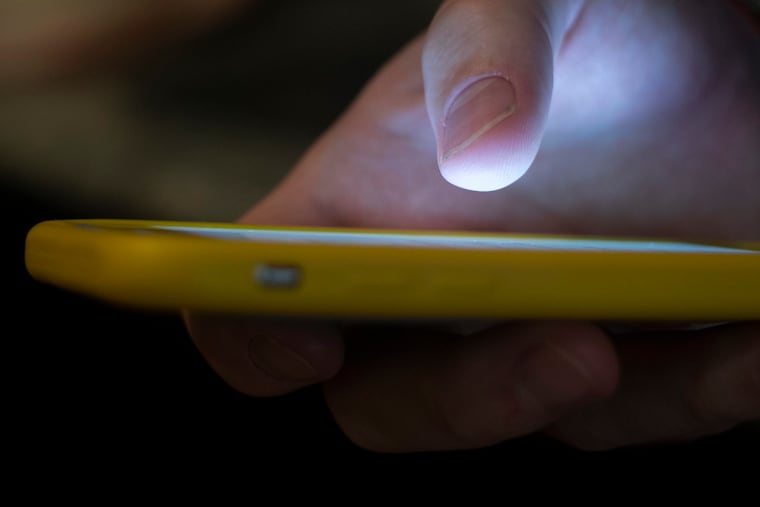There’s a new area code coming to the Philly suburbs because 484 and 610 options are running out
An 835 area code will soon be available in Southeastern Pennsylvania.

Southeastern Pennsylvania, prepare for yet another new telephone area code: 835.
The Pennsylvania Public Utility Commission on Wednesday approved the new area code, which will serve the same geographic area currently served by the 610 and 484 area codes.
The North American Numbering Plan Administrator (NANPA), a neutral third-party entity that allocates telephone numbering resources, asked the PUC to approve a new overlay area code because all the numbers in the 610 and 484 area codes are expected to be exhausted by early 2023, due in part to the proliferation of cellular devices. The PUC approved the request by a 3-0 vote.
The 610/484 calling area serves residents and businesses in Lehigh, Berks, Delaware, Chester, and Northampton Counties, along with a portion of Montgomery, Bucks, Monroe and Carbon Counties.
Under the implementation plan approved by the PUC, no 835 numbers will be assigned until the remaining 610/484 numbers are completely exhausted. At that time, new phone number assignments will be made in the 835 area code.
» READ MORE: From the 215: The cultural imprint of Philadelphia’s area code - Billy Penn
The creation of a new overlay area code has been done numerous times in Pennsylvania, including in 2018 when the 445 area code was added onto the Philadelphia area code served by 215 and 267 numbers. The 215/267/445 area codes cover all of Philadelphia and parts of Berks, Bucks, Lehigh, and Montgomery Counties.
No changes for existing numbers
The new 835 overlay area code will require no changes in dialing behavior, and existing phone numbers will not be affected, said Nils Hagen-Frederiksen, PUC spokesman.
The addition of a new overlay is expected to be far less disruptive than previous expansions of the area code system, such as when the 215 area code was split in 1994 to create the 610 area code. That change required many residents and businesses to actually change their phone numbers, triggering some pushback.
Only five years after the 610 area code was created, the 484 overlay area code was established. Those numbers were sufficient to meet demand until now. The addition of the new 835 number is projected to meet demand for 58 years, according to the NANPA petition.
The last time Pennsylvania split an existing area code, 717, occurred in 1998 when the 570 area code was created in Northeastern Pennsylvania.
Numbering system was started by Ma Bell
The North American Numbering Plan was developed in 1947 by AT&T to simplify and facilitate direct dialing of long-distance calls.
New area codes have been periodically added with the rapid expansion of telecommunications, including the addition of cell phones, data lines, and fax lines. Watch phones and such services as GM’s OnStar to find cars are also driving demand.
Remember seven-digit dialing?
The addition of the new area code in Southeastern Pennsylvania comes while residents and businesses in 82 area codes in 35 states are switching from seven-digit dialing to 10-digit dialing. This transition already has taken place in Pennsylvania and in much of New Jersey because of the addition of overlay area codes requiring callers to dial area codes, even for local numbers.
The big national transition to 10-digit calling was triggered by the Federal Communications Commission, which is implementing a quick-dial national number to reach the National Suicide Prevention Lifeline. Starting next July, callers need only dial “988″ to connect to the Lifeline, much like “911″ automatically dials emergency services.
But many area codes with seven-digit dialing already assigned 988 to local exchanges (the fourth, fifth and sixth numbers in a 10-digit phone number). To avoid confusion and lost calls, those area codes began the transition last month to 10-digit dialing so that only callers dialing 988 will be directed to the suicide hotline.
Callers in Delaware’s area code 302, as well as area codes 856 and 908 in New Jersey, are among the 82 area codes that now must dial 10-digits (area code + telephone number) for all local calls.
The plan is among several telecommunications services provided by Somos Inc., an East Brunswick, N.J. firm, under an eight-year $76 million contract with the FCC.
Why there’s no 123 area code
The system for assigning area codes (which the industry formally calls Numbering Plan Areas) is elaborate and formalized under rules approved by the FCC. For instance, no area codes can begin with 0 or 1 (lest the phone system confuse them with an operator call or a long-distance call).
There are 121 more numbers that are off limits — such as 911 and other service numbers, or “easily recognizable codes” where the second and third digits of an area code are the same, like 888 for toll-free service.
The unassigned area codes also include 80 “expansion codes,” which are being held in reserve for use when the nation outgrows the current 10-digit system and the format needs enlargement.
Of the 679 assignable area codes, 440 have been assigned.